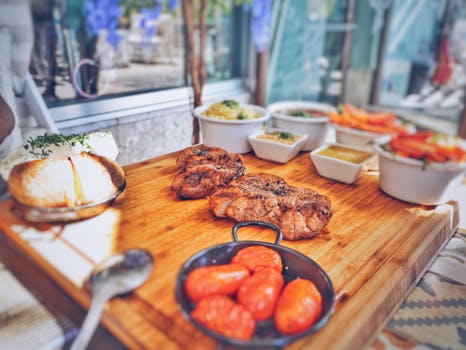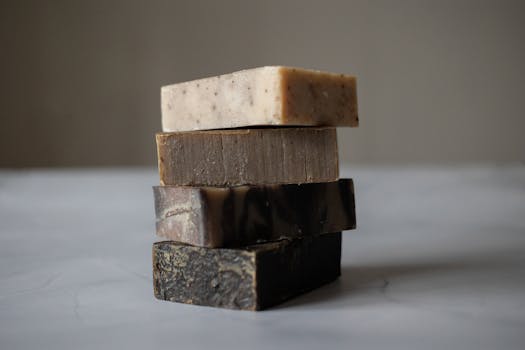
The Melting Pot of Cultures in New Orleans
New Orleans is a melting pot of diverse history and traditions. French, Spanish, African, and Creole influences have all converged to create a unique cultural identity. This city is a true blend of flavors and experiences, making it a magical place to visit.
French and Spanish Influences
The French and Spanish have left an indelible mark on New Orleans. From the architecture to the language, their influence is everywhere. The French Quarter, with its charming streets and historic buildings, is a testament to this rich heritage.
African American Contributions
African American culture is a cornerstone of New Orleans’ identity. The music, food, and vibrant community life owe much to the African American influence. Jazz, a genre born in New Orleans, is a prime example of this cultural fusion.
Creole and Cajun Traditions
Creole and Cajun traditions add another layer of richness to New Orleans’ cultural tapestry. These communities have brought their own unique flavors and customs, contributing to the city’s diverse and vibrant culture.
The Vibrant Music Scene

New Orleans is the birthplace of jazz, a genre that has influenced music worldwide. The streets are alive with the sounds of trumpets, saxophones, and the undeniable energy of jazz musicians. This city is a sensory symphony, celebrating global cuisines and traditions through its music.
Birthplace of Jazz
No exploration of Louisiana’s culture would be complete without mentioning its vibrant music scene. Known as the birthplace of jazz, New Orleans is teeming with soul-stirring melodies and lively rhythms. The streets are filled with the sounds of trumpets, saxophones, and the undeniable energy of jazz musicians.
Second Line Parades
Second Line Parades are a unique tradition in New Orleans. These parades are community-driven events that include jam sessions, music workshops, and artist meet-and-greets. They foster a connection between performers and fans, ensuring the continuation of the city’s dynamic musical legacy.
Influence of Voodoo on Music
The influence of Voodoo on music in New Orleans is profound. This cultural heritage adds a mystical element to the music, creating a unique sound that is both captivating and enchanting. The rhythms and chants of Voodoo ceremonies have found their way into the music, making it a truly unique experience.
Culinary Delights of New Orleans
Famous Dishes and Where to Find Them
New Orleans is a foodie’s paradise. From jambalaya to crawfish boils, the city offers a rich tapestry of flavors. For a taste of history, visit Dooky Chase’s, a cornerstone of Creole cuisine since 1941. If you’re looking for unique dining experiences, check out places like Dakar NOLA and Mosquito Supper Club.
Influence of Various Cultures on Cuisine
The food scene in New Orleans is a melting pot of cultures. French, Spanish, African, and Native American influences blend to create unforgettable dishes. This diversity is evident in every bite, from the spicy kick of Cajun gumbo to the rich, buttery flavors of crawfish etouffee.
Farmers Markets and Local Ingredients
Farmers markets are the heart of New Orleans’ culinary world. Here, you’ll find fresh, local ingredients that make the city’s food so special. From seafood to seasonal produce, these markets offer a glimpse into the vibrant food culture of New Orleans. Don’t miss the chance to explore these bustling hubs of local flavor.
Historic Landmarks and Museums
New Orleans is home to some of the most fascinating museums in the country. The National World War II Museum is a must-see, offering an immersive experience into the history of the war. For art lovers, the Ogden Museum of Southern Art showcases an impressive collection of Southern masterpieces. Don’t miss the Presbytere, part of the Louisiana State Museum, which delves into the vibrant culture and history of the region.
The city is rich with historic sites that tell the story of its diverse past. The Longue Vue House and Gardens is a stunning example of classic architecture and beautiful landscapes. Madame John’s Legacy, another gem, offers a glimpse into 18th-century Creole life. The Elms Mansion and Gardens is another historic site that shouldn’t be missed, offering tours that take you back in time.
New Orleans is a hub for art and culture. The Historic Carver Theater is a cultural landmark that hosts a variety of performances and events. The Anshe Sfard Synagogue is another important site, reflecting the city’s diverse religious heritage. For a unique experience, visit the New Canal Lighthouse Museum & Education Center, which combines history with stunning views of Lake Pontchartrain.
Festivals and Celebrations
New Orleans is a city that knows how to throw a party, and its festivals are legendary. With over 130 festivals a year, there’s always something to celebrate. From food and music to art and culture, these events showcase the vibrant spirit of the city.
Architectural Wonders
French Quarter and Its Charm
The French Quarter is a must-see for anyone visiting New Orleans. Wander through its streets and you’ll find elegant townhouses and historic buildings that transport you back in time. The intricate wrought-iron balconies and detailed facades are simply breathtaking. It’s like stepping into a different world.
Garden District Mansions
The Garden District is home to some of the most stunning mansions you’ll ever see. These grand homes, with their lush gardens and stately architecture, are a testament to the city’s rich history. Take a stroll through the neighborhood and admire the beautiful homes that line the streets.
Historic Churches and Cathedrals
New Orleans is also known for its historic churches and cathedrals. The St. Louis Cathedral, with its towering spires and intricate details, is a true masterpiece. It’s a symbol of the city and a prime example of French Colonial architecture. Don’t miss the chance to visit this iconic landmark.
Exploring the Neighborhoods
New Orleans is a city of diverse and vibrant neighborhoods, each with its own unique charm and character. From the bohemian vibes of Bywater to the historic streets of Treme, there’s something for everyone to discover.
Bywater and Marigny
Bywater and Marigny are two of the coolest neighborhoods in New Orleans. Known for their colorful houses and artistic community, these areas are a haven for creatives and free spirits. Bywater is especially famous for its street art and quirky cafes, while Marigny boasts a lively music scene and some of the best bars in the city.
Treme and Its History
Treme is one of the oldest neighborhoods in New Orleans and is rich in African American culture and history. This area is home to some of the city’s most important cultural landmarks, including the Treme Community Center and the Backstreet Cultural Museum. Walking through Treme, you’ll feel the deep roots of jazz and the vibrant spirit of the community.
Uptown and the Garden District
Uptown and the Garden District are known for their stunning mansions and tree-lined streets. This area is perfect for a leisurely stroll, where you can admire the beautiful architecture and lush gardens. The Garden District is also home to some of the city’s best restaurants and shops, making it a great place to spend an afternoon.
Discover hidden gems in these diverse neighborhoods, where cultural treasures and artistic expressions await beyond the famous skyline.
Conclusion
New Orleans is a city like no other. Its rich cultural heritage, shaped by a blend of different communities, makes it a truly unique place. From the vibrant music and delicious food to the colorful festivals and historic sites, there’s always something new to discover. Whether you’re exploring the African American roots, enjoying the Cajun and Creole influences, or simply soaking in the lively atmosphere, New Orleans offers an unforgettable experience. So, pack your bags and get ready to explore the magic of this incredible city.
Frequently Asked Questions
What are the main cultural influences in New Orleans?
New Orleans is a blend of French, Spanish, African American, Creole, and Cajun cultures. Each group has contributed to the city’s unique traditions, food, and music.
Why is New Orleans known as the birthplace of jazz?
Jazz started in New Orleans in the late 19th and early 20th centuries. The city’s mix of cultures and musical styles created the perfect environment for jazz to develop.
What are some must-try dishes in New Orleans?
Some must-try dishes include gumbo, jambalaya, po’ boys, beignets, and crawfish. You can find these dishes in many local restaurants and food markets.
What are the most famous festivals in New Orleans?
Mardi Gras is the most famous festival, but there are many others like the Jazz Fest, French Quarter Festival, and various cultural celebrations throughout the year.
What are some historic landmarks to visit in New Orleans?
You should visit the French Quarter, St. Louis Cathedral, Jackson Square, and the Garden District. These sites offer a glimpse into the city’s rich history.
Which neighborhoods should I explore in New Orleans?
Be sure to check out Bywater, Marigny, Treme, Uptown, and the Garden District. Each neighborhood has its own unique charm and history.






